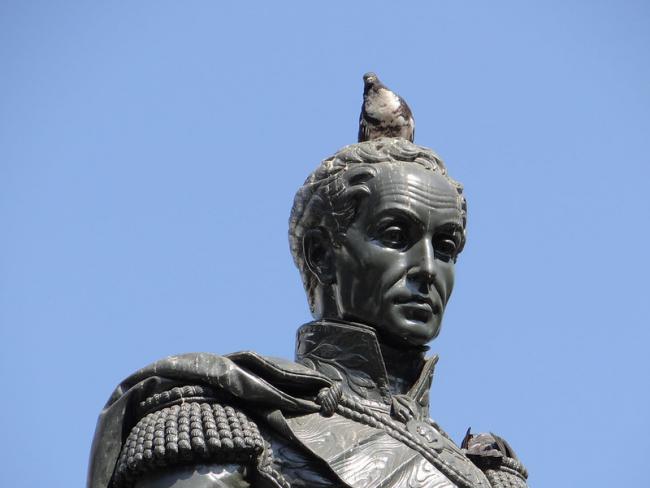by DANIEL REY

A new history of Bolívar by Robert T. Conn explores his contested legacy in Latin America.
The preeminent figure in Latin American history, Simón Bolívar (1783-1830) is a wellspring of ideologies, political movements, and creative arts.
In Bolívar’s Afterlife in the Americas: Biography, Ideology, and the Public Sphere, historian Robert T. Conn of Wesleyan University analyzes the ways politicians and intellectuals in Venezuela and across the Americas have represented his life and debated his thought.
As Conn demonstrates, Bolívar’s life was complex and paradoxical. For example, during his campaign to liberate northern South America, he executed a mixed-race general on the grounds of insubordination, but spared whites who contested his leadership. After fighting Spanish imperialism, he wanted a major European colonial power to safeguard his new republic’s sovereignty. And most famously of all, a month before his death, the man who was a revolutionary leader for nearly two decades wrote, “He who serves revolution ploughs the sea.”
Conn conveys that these inconsistencies created the conditions for the disparate interpretations of later generations.Bolívar left behind a vast written record of manifestos, speeches, and correspondence (the latter of which, he wanted burned after his death). Conn illustrates how this colossal canon allows Bolívar to be read as a dictator or a champion of liberty, a racist or a willing emancipator of African-descendants (pardos), a class-blind proponent of equality or a classist defender of the creole elite. Conn conveys that these inconsistencies created the conditions for the disparate interpretations of later generations.
After outlining this thesis and sketching biographical details, Conn studies the way Bolívar’s name was used by José Antonio Páez, Venezuela’s first president since secession from Bolívar’s Gran Colombia (present-day Colombia, Venezuela, Ecuador, Panama, and parts of Peru and Brazil). The book then explores Bolívar’s influence in Venezuela over the following hundred years, before turning to the Bolivarian narrative across the continent. However, Conn’s decision not to thoroughly examine Bolívar’s afterlife in the chavista movement—surely the most influential and contentious use of Bolívar’s name—is a glaring and incomprehensible oversight.
